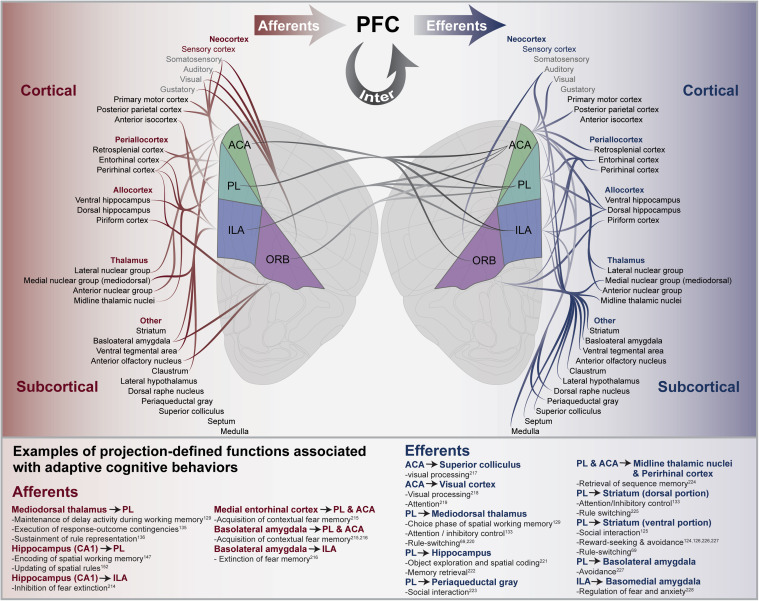
Highlights
Abstract
The prefrontal cortex (PFC) enables a staggering variety of complex behaviors, such as planning actions, solving problems, and adapting to new situations according to external information and internal states. These higher-order abilities, collectively defined as adaptive cognitive behavior, require cellular ensembles that coordinate the tradeoff between the stability and flexibility of neural representations. While the mechanisms underlying the function of cellular ensembles are still unclear, recent experimental and theoretical studies suggest that temporal coordination dynamically binds prefrontal neurons into functional ensembles. A so far largely separate stream of research has investigated the prefrontal efferent and afferent connectivity. These two research streams have recently converged on the hypothesis that prefrontal connectivity patterns influence ensemble formation and the function of neurons within ensembles. Here, we propose a unitary concept that, leveraging a cross-species definition of prefrontal regions, explains how prefrontal ensembles adaptively regulate and efficiently coordinate multiple processes in distinct cognitive behaviors.